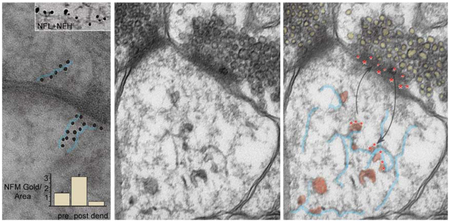A Yuan
A Yuan
1Center for Dementia Research, Nathan Kline Institute, Orangeburg, NY, USA
2Department of Psychiatry, New York University School of Medicine, New York, NY, USA
1,2,
H Sershen
H Sershen
2Department of Psychiatry, New York University School of Medicine, New York, NY, USA
3Neurochemistry Division, Nathan Kline Institute, Orangeburg, NY, USA
2,3,
Veeranna
Veeranna
1Center for Dementia Research, Nathan Kline Institute, Orangeburg, NY, USA
2Department of Psychiatry, New York University School of Medicine, New York, NY, USA
1,2,
BS Basavarajappa
BS Basavarajappa
4Analytical Psychopharmacology Division, Nathan Kline Institute, Orangeburg, NY, USA
5Department of Psychiatry, College of Physicians and Surgeons, Columbia University, New York, NY, USA
4,5,
A Kumar
A Kumar
1Center for Dementia Research, Nathan Kline Institute, Orangeburg, NY, USA
2Department of Psychiatry, New York University School of Medicine, New York, NY, USA
1,2,
A Hashim
A Hashim
3Neurochemistry Division, Nathan Kline Institute, Orangeburg, NY, USA
3,
M Berg
M Berg
1Center for Dementia Research, Nathan Kline Institute, Orangeburg, NY, USA
1,
J-H Lee
J-H Lee
1Center for Dementia Research, Nathan Kline Institute, Orangeburg, NY, USA
2Department of Psychiatry, New York University School of Medicine, New York, NY, USA
1,2,
Y Sato
Y Sato
1Center for Dementia Research, Nathan Kline Institute, Orangeburg, NY, USA
1,
MV Rao
MV Rao
1Center for Dementia Research, Nathan Kline Institute, Orangeburg, NY, USA
2Department of Psychiatry, New York University School of Medicine, New York, NY, USA
1,2,
PS Mohan
PS Mohan
1Center for Dementia Research, Nathan Kline Institute, Orangeburg, NY, USA
1,
V Dyakin
V Dyakin
1Center for Dementia Research, Nathan Kline Institute, Orangeburg, NY, USA
1,
J-P Julien
J-P Julien
6Centre de Recherche du Centre Hospitalier de l'Université Laval, Département d'anatomie et physiologie de l'Université Laval, Québec, QC, Canada
6,
VM-Y Lee
VM-Y Lee
7Department of Pathology and Laboratory Medicine, University of Pennsylvania, Philadelphia, PA, USA
7,
RA Nixon
RA Nixon
1Center for Dementia Research, Nathan Kline Institute, Orangeburg, NY, USA
2Department of Psychiatry, New York University School of Medicine, New York, NY, USA
8Cell Biology, New York University School of Medicine, New York, NY, USA
1,2,8
1Center for Dementia Research, Nathan Kline Institute, Orangeburg, NY, USA
2Department of Psychiatry, New York University School of Medicine, New York, NY, USA
3Neurochemistry Division, Nathan Kline Institute, Orangeburg, NY, USA
4Analytical Psychopharmacology Division, Nathan Kline Institute, Orangeburg, NY, USA
5Department of Psychiatry, College of Physicians and Surgeons, Columbia University, New York, NY, USA
6Centre de Recherche du Centre Hospitalier de l'Université Laval, Département d'anatomie et physiologie de l'Université Laval, Québec, QC, Canada
7Department of Pathology and Laboratory Medicine, University of Pennsylvania, Philadelphia, PA, USA
8Cell Biology, New York University School of Medicine, New York, NY, USA



